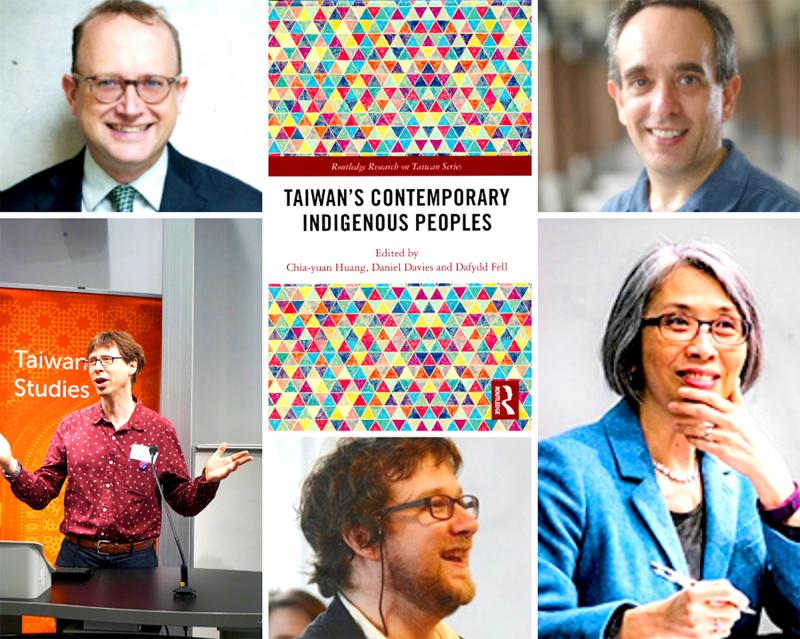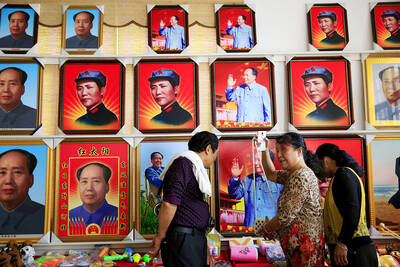This month saw the online launch of an English-language book that it is hoped will enhance Taiwan studies at universities in Europe and further afield, providing a wider audience with unique insight into a field of study that is attracting increasing attention.
Taiwan’s Contemporary Indigenous Peoples is the result of a lecture series at London’s Centre of Taiwan Studies, part of the University of London’s School of Oriental and African Studies. These talks on issues related to Taiwanese Aborigines formed the basis of the new publication, the whole project facilitated by a grant from Taipei’s Shung Ye Museum of Formosan Aborigines (順益台灣原住民博物館).
“Within Taiwanese universities there has been a rapid growth in the numbers of Indigenous teaching and research programs in the last decade,” says Dafydd Fell, director of the centre. “There have also been parallel trends in Indigenous language promotion in the media, such as Indigenous Television, and in schools. Since some of these Indigenous studies programs in Taiwan are also developing English language courses, we are hoping our book can be widely used in Taiwan.”

Photos courtesy of Dafydd Fell
Fell added that within the field of international Taiwan Studies there has been a similar growth in interest in Aboriginal topics, but much of this work tended to be dispersed across different disciplines. The book brings together studies on modern Taiwanese Indigenous topics.
Both trends form part of a growing global interest in Indigenous studies that Taiwan is just one part of, with the nation providing fascinating examples of a number of aspects of contemporary indigeneity. Part of a multi-ethnic society with diverse cultural characteristics, Taiwan’s Indigenous peoples have lived on the island for thousands of years. Their languages belong to the Austronesian family and they have close cultural ties to Oceania and the South Pacific.
The book has four section themes: historical perspectives, the arts, education and politics. Chapters are written not only by academics but also by writers from within the Taiwanese Indigenous rights movement.
The authors who spoke about their respective chapters in the book at its launch, described by Fell as “four giants of Taiwan studies,” highlight the diversity of its content.
Niki Alsford showed that as a result of land dispossession, lack of employment opportunities and the deterioration of traditional livelihoods, there has been a significant increase in Indigenous domestic migration into urban environments. This has made it important for Indigenous peoples to maintain a framework of traditions and values compatible with multiple community-based, pan-Indigenous and wider Taiwanese identities.
Scott Simon talked about how Indigenous peoples have adapted Christianity to their local cultural context rather than passively accepting external values, defining contemporary religious communities and institutions as hybrid creations not foreign impositions.
Kerim Friedman used the concept of chronotope to discuss shifting representations of Taiwan’s Indigenous peoples in documentary films, while Chang Bi-yu (張必瑜) discussed representations of Indigenous peoples in educational materials, focusing on the dominance of a “Han perspective” and the stigmatization and reduction of Indigenous peoples to limited social and physical spheres.
Fell says there has been growing interest in Taiwan’s Indigenous peoples among students at the Centre for Taiwan Studies.
“I think students are often curious about the way many of the trends we see in Indigenous society are quite different from the rest of Taiwan. For instance, patterns in Indigenous voting behavior and party identification,” he says.
A more inclusive approach to Indigenous cultures at present contrasts with past efforts aimed at enforcing assimilation.
“This did a huge amount of damage in the area of language policies, as so many Indigenous languages in Taiwan became endangered,” Fell says. “It is encouraging to see the way Indigenous cultures have become a source of pride and part of Taiwan’s national branding in recent years.”
Fell says that Taiwan has used Indigenous or Austronesian heritage as part of its international diplomacy efforts, particularly in its relations with the Pacific region, this forming the subject matter of one of the book’s chapters.
However, as pointed out at the book launch, Taiwan’s Indigenous peoples are still often misunderstood, with a tendency for them to be inaccurately portrayed as a homogeneous, exotic group.
There is also plenty of scope for further study of a number of important issues including Indigenous sovereignty, urban indigeneity (bearing in mind that more than 50 percent of Indigenous people now live in urban areas) and Indigenous knowledge, particularly relating to environmental issues.

Taiwan can often feel woefully behind on global trends, from fashion to food, and influences can sometimes feel like the last on the metaphorical bandwagon. In the West, suddenly every burger is being smashed and honey has become “hot” and we’re all drinking orange wine. But it took a good while for a smash burger in Taipei to come across my radar. For the uninitiated, a smash burger is, well, a normal burger patty but smashed flat. Originally, I didn’t understand. Surely the best part of a burger is the thick patty with all the juiciness of the beef, the

This year’s Miss Universe in Thailand has been marred by ugly drama, with allegations of an insult to a beauty queen’s intellect, a walkout by pageant contestants and a tearful tantrum by the host. More than 120 women from across the world have gathered in Thailand, vying to be crowned Miss Universe in a contest considered one of the “big four” of global beauty pageants. But the runup has been dominated by the off-stage antics of the coiffed contestants and their Thai hosts, escalating into a feminist firestorm drawing the attention of Mexico’s president. On Tuesday, Mexican delegate Fatima Bosch staged a

The ultimate goal of the Chinese Communist Party (CCP) is the total and overwhelming domination of everything within the sphere of what it considers China and deems as theirs. All decision-making by the CCP must be understood through that lens. Any decision made is to entrench — or ideally expand that power. They are fiercely hostile to anything that weakens or compromises their control of “China.” By design, they will stop at nothing to ensure that there is no distinction between the CCP and the Chinese nation, people, culture, civilization, religion, economy, property, military or government — they are all subsidiary

Would you eat lab-grown chocolate? I requested a sample from California Cultured, a Sacramento-based company. Its chocolate, not yet commercially available, is made with techniques that have previously been used to synthesize other bioactive products like certain plant-derived pharmaceuticals for commercial sale. A few days later, it arrives. The morsel, barely bigger than a coffee bean, is supposed to be the flavor equivalent of a 70 percent to 80 percent dark chocolate. I tear open its sealed packet and a chocolatey aroma escapes — so far, so good. I pop it in my mouth. Slightly waxy and distinctly bitter, it boasts those bright,